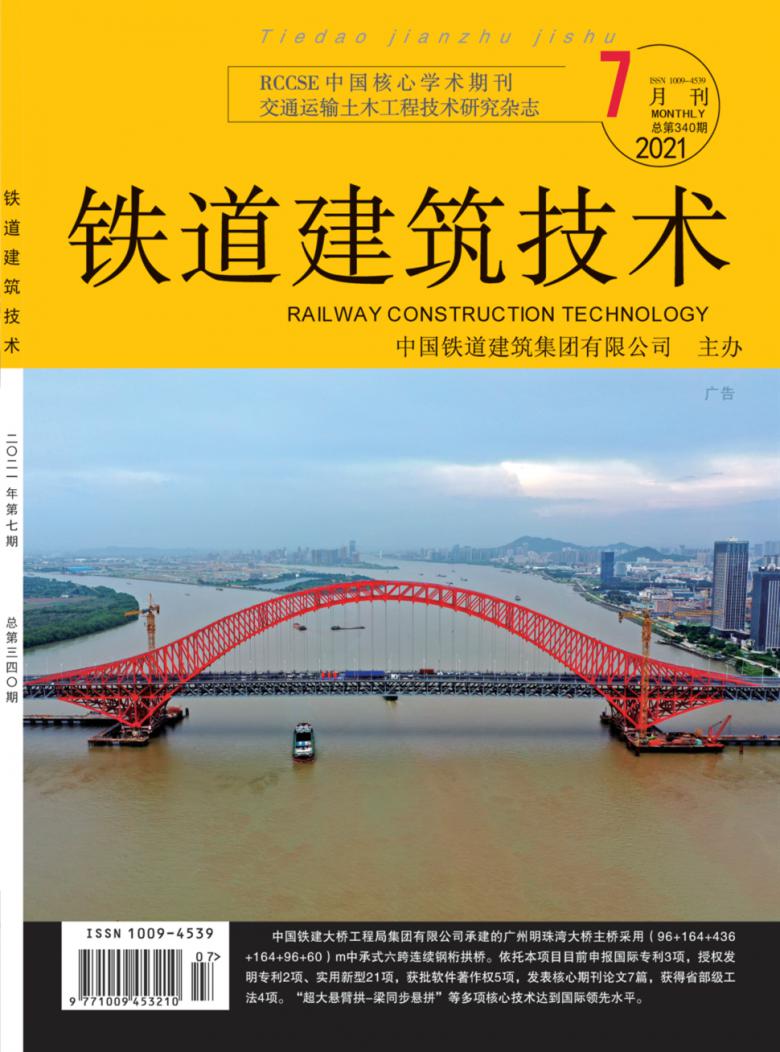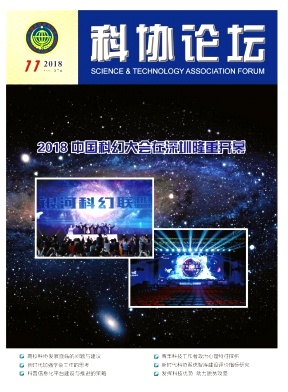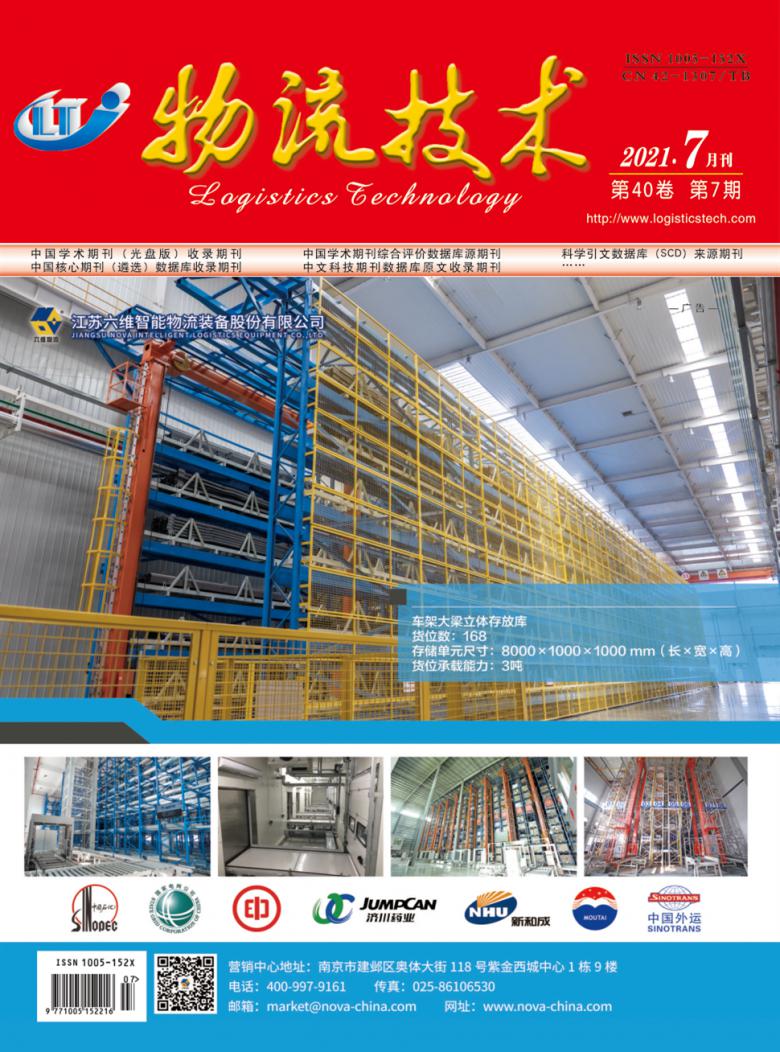关于纳米金-表阿霉素复合体的体外抗肿瘤作用
佚名
赵晓旭 潘运龙 胡杨志 覃莉 丁晖 巫青
【摘要】 【目的】 观察纳米金-表阿霉素复合体(EPI-AuNP)能否抑制人脐静脉内皮细胞(HUVEC)?人肝癌细胞(HepG2)的增殖?【方法】 采用化学合成法制备EPI-AuNP,通过紫外-可见吸收光谱?荧光淬灭实验?动态光散射及Zeta电位变化对其进行鉴定?体外实验分为AuNP处理组?EPI处理组?EPI-AuNP处理组和空白对照组?将HUVEC?HepG2细胞分别接种于96孔板,培养24 h后各组分别加入AuNP溶液?EPI溶液?EPI-AuNP溶液和无血清培养液200 μL,继续培养24 h后:MTT比色法检测HUVEC?HepG2细胞生存率;紫外-可见分光光度法检测各细胞内EPI的积聚量?【结果】 紫外-可见吸收光谱显示:AuNP的最大吸收峰在520 nm处,而EPI-AuNP在525 nm处?EPI (100 mg/L)荧光强度为195.2 ± 7.5;EPI-AuNP为16.4 ± 5.0,P=0.000?AuNP的平均粒径及Zeta电位分别为:(14.34 ± 0.75) nm?(-21.19 ± 0.64)mV;EPI-AuNP为:(18.54 ± 1.84)nm?(-15.34 ± 0.72)mV,P<0.01?体外实验:MTT比色法结果显示EPI处理组HUVEC?HepG2细胞的生存率分别为(29.25 ± 1.59)%?(71.10 ± 4.16)%;EPI-AuNP处理组:(21.29 ± 1.51)%?(43.82 ± 2.21)%,P=0.000?【结论】 成功合成EPI-AuNP复合体,体外实验证实其对HUVEC?HepG2细胞均具有增殖抑制作用?
【关键词】 纳米金-表阿霉素复合体;HUVEC;HepG2细胞
Abstract: 【Objective】 To observe the in vitro antitumor effects of epirubicin-nanogold compounds (EPI-AuNP). 【Methods】 EPI-AuNP was prepared by chemosynthesis and investigated using UV-Vis spectrophotometer, fluorescence studies, dynamic light scattering,and zeta potential. Human umbilical vein endothelial cells (HUVEC) and HepG2 cells were pided into 4 groups: AuNP treatment group, EPI treatment group, EPI-AuNP treatment group and control group. After seeded in 96-well plate and cultured for 24 h separately, HUVEC and HepG2 cells were treated with 200 μL of AuNP,EPI,EPI-AuNP,and serum-free medium, respectively. Inhibition effect of each group on the HUVEC and HepG2 cells was assessed using MTT colorimetric method. UV-Vis spectrophotometer was applied to detect the cells epirubicin accumulation of different groups. 【Results】 A red shift in the SPR band maxima in the EPI-AuNP spectrum(λmax~525 nm) as compared with the spectrum of AuNP alone (λmax~520 nm);The fluorescence intensity of EPI (100 mg /L) was (195.2 ± 7.5) and EPI-AuNP was (16.4 ± 5.0),P=0.000. The hydrodynamic diameter of AuNP was (14.34 ± 0.75) nm while EPI-AuNP was (18.54 ± 1.84) nm. Meanwhile, the zeta potential of AuNP was (-21.19 ± 0.64) mV while EPI- AuNP was (-15.34 ± 0.72) mV,P<0.01. The HUVEC survival rate of EPI-AuNP treatment group [(21.29 ± 1.51)%] was lower than the EPI group [(29.25 ± 1.59)%]. The HepG2 cells survival rate of EPI-AuNP treatment group [(43.82 ± 2.21)%] was lower than the EPI group [(71.10 ± 4.16)%], P<0.01. 【Conclusions】 EPI-AuNP has been synthesized and indicated enhanced drug potency in vitro by MTT assay.
Key words: epirubicin-nanogold compounds; HUVEC; HepG2 cells
Snake venoms contain toxins that interfere in the mechanism of haemostasis and thrombosis. Some of them affect platelet aggregation and/or blood coagulation. The ability of procoagulant venom proteins that can activate the coagulation cascade at specific steps enables their use in diagnostic determination of coagulation factors. FactorⅩ(FⅩ) is one of the key components in the blood coagulation cascade,which can be activated to form activated Factor Ⅹ(FⅩa) by FⅨa, in the presence of Ca2+, phospholipid, and Factor Ⅷa (FⅧa); or by Factor Ⅶa (FⅦa), in the presence of Ca2+ and tissue factor. The activation results from the cleavage site of the Arg52- Ile53 bond in the heavy chain of human FⅩ and release of a 52-residue activation peptide. And the snake venom activators of FⅩ are non-physiological enzymes, which can convert FⅩ into FⅩa, in the presence of Ca2+ at the same cleavage site of Arg52-Ile53[1]. The venoms of Daboia russelli siamensis have been reported to contain strong FⅩ-activating components. Because of their biological activities, some of these venom proteins are useful for basic studies of hemostasis, and for pharmacological and clinical applications. Although we have known that the venom of Daboia russelli siamensis also contains some hemostatic fractions,studies about the hemostatic effect and procoagulant mechanism of Daboia russelli siamensis venom are minimal. In the present investigation,We purified the FⅩ-activating fraction,FⅤe-1 from Daboia russelli siamensis (Myanmar) venom,determined the physical and chemical prope-rties,and investigated the mechanism of hemostasia of FⅤe-1.
1 Materials and Methods
1.1〓Snake venom
The lyophilized venom of Daboia russelli siamensis (Myanmar) was purchased from Guangzhou Medical College (Guangzhou, China) and stored in a desiccator.
1.2〓Reagents
CM-Sephadex C-50 and SuperdexTM 75 were purchased from Pharmacia (Uppasala, Sweden). Human fibrinogen and thrombin were supplied from Sigma(St Louis,MO,USA). FⅩ,FⅩa, prothrombin,FⅩa chromogenic substances and prothrombin chro-mogenic substances were from Hyphen BioMed. RVV-Ⅹ was purchased from Enzyme Research Laboratoties (Global Coag, USA). All other reagents were of analytical grade and obtained from commercial sources (Guangzhou, China).
1.3〓Purification of FⅤe-1
Daboia russelli siamensis (Myanmar) venom (1.0 g) was dissolved in 0.5 mol/L ammonium acetate (pH 5.8) and applied to a CM-Sephadex C-50 column (2.6 cm×80 cm). The fractions were eluted with 0.1 mol/L ammonium acetate buffer (pH 5.8) containing a linear NaCl gradient (0.5-1 mol/L) at a flow rate of 4 tubes/h. The peak containing highest hemostatic activity was chromatographed on a SuperdexTM column (2.0 cm×100 cm) equilibrated with 0.02 mol/L sodium phosphate buffer (pH 7.4). Elution was performed with the same buffer. The fraction with hemostatic activity was again applied on a SuperdexTM column. All steps were carried out at room temperature and monitored at 280 nm. All fractions in each step were tested for hemostatic activity as further described.
1.4〓Melecular weight and isoelectric point
SDS-PAGE was performed according to the method of Laemmli[2]. The molecular weight standards were MBP-G-galactosidase(175 000),MBP-paramyosin (83 000), glutamic dehydrogenase (62 000), aldolase (47 500), triosephosphate isomerase (32 500), G-lactoglobulin A(25 000), lysozyme(16 500), and aprotinin(6 500). Isoelectrofocusing_PAGE was carried out with a pH gradient of 4.65-9.6 generated by ampholine; Amersham Biosciences, Uppsala, Sweden), as described by Zhang et al[3].
1.5〓Mass spectrometric analysis
MALDI-MS anaylysis was assayed on a Autoflex MALDI-TOF-TOF-MS (matrix-assisted laser desorption/ionization-time of flight mass spectr-ometer,Bruker)equipped with nitrogen laser wave-length of 337 nm and the matrix was CCA as previously described[4]. Protein mass spectra were obtained in the positive ion mode at an acceleration voltage of 20 kV, extraction voltage of 23 kV.
1.6〓N-terminal sequence determination
According to the method of Kennedy[5], 16 μg of FⅤe-1 sample was applied on a 12.5% Tricine- SDS-PAGE and electrotransferred onto a polyvinylidene difluoride (PVDF) membrane. After staining with Coomassie brilliant blue, the protein band of interest was cut out. N-terminal amino acid sequencing of FⅤe-1 was determined by automated Edman degradation using a AB1491A protein sequencer (PE) and compared with other protein sequences at the National Center for Biotechnology Information (NCBI) database using the BLAST service.
1.7〓Measurement of hemostatic activities
Four different groups were established at various concentration intervals. Each concentration was also tested 6 times. The FⅤe-1 groups were given of the doses of 6.00, 3.00, 1.50, 0.75, and 0.38 mg/mL. Thrombin was used as a positive control with the dose of 250.00, 125.00, 62.50, 31.25, 15.63, 7.81, and 3.91 U/mL. RVV-Ⅹ was used as another positive control with the dose of 1200.00, 600.00, 300.00, 150.00, 75.00, 37.50, and 18.75 ng/mL. Normal saline was used as a negative control. The hemostatic activities of thrombin and FⅤe-1 were measured according to the method of the coagulation time determined by Williams[6]. The citrated plasma (100 μL) was incubated with 100 μL of 0.01 mol/L Tris-HC1 buffer (pH 7.3) containing 0.15 mol/L NaCl at 37 ℃ for 3 min. 100 μL of 0.05 mol/L CaCl2 plus thrombin (100 μL) or FⅤe-1 (100 μL) were added to the pre-incubation mixture respectively.The clotting time of the plasma was then recorded.
1.8〓Effect of FⅤe-1 on human blood factor X
The activation of purified human FⅩ was followed by using the FⅩa differential chromogenic substance[7]. Purified human blood factor X (100 U) was incubated at 37 ℃ in 50 mmol/L Tris-HCl (pH 7.4) containing 0.1 mol/L NaCl, 0.01 mol/L CaCl2, and 12 μg of FⅤe-1 in a total reaction volume of 500 μL. Aliquots (50 μL) were taken at 5, 10, 15, 20, 25, 30, 35, 40, and 45 min intervals, and 50 μL of FXa differential chromogenic substance solution [dissolved in 50 mmol/L Tris-HCl (pH 7.4) containing 0.1 mol/L NaCl (final concentration of 0.2 mmol/L)] was added. The absorbance was recorded at 405 nm. FⅩa was used as a positive control, and normal saline was used as a negative control. In addition, at 3, 7, 15, 30, 45, 60, 90, and 120 min intervals, aliquots (20 μL) were removed from FⅤe-1 group and analyzed by SDS-PAGE.
1.9〓Effect of FⅤe-1 on human prothrombin
Using the method of Hofmann[8],the activation of the purified prothrombin was followed by using the thrombin differential chromogenic substance. Purified human prothrombin (6.67 μg/μL) was incubated at 37 ℃ in 50 mmol/L, Tris-HCl (pH 7.4) containing 0.1 mol/L NaCl and 10 mmol/L CaCl2 with FⅤe-1(12 μg). Aliquots (50 μL) were removed at various times. 450 μL of thrombin differential chromogenic substance solution [5 mg/mL, dissolved in 50 mmol/L Tris-HCl (pH 7.4) containing 0.1 mol/L NaCl] was added into the aliquots. The absorbance was recorded at 405 nm. Thrombin was used as a positive control, and normal saline was used as a negative control.
1.10〓Effect of FⅤe-1 on fibrinogen
FⅤe-1 (20 μL, concentrations were 6.00, 3.00, 1.50, 0.75, and 0.38 mg/mL, respectively) and 200 μL of human fibrinogen solution (3 mg/mL) in 50 mmol/L Tris-HCl buffer (pH 7.4, containing 0.1 mol/L NaCl and 10 mmol/L CaCl2) were mixed and incubated at 37 ℃. The clotting time was recorded. Thrombin was used as a positive control, and normal saline was used as a negative control.
1.11〓Effect of heat on venom stability
FⅤe-1 (20 μL, 1 mg/mL) was preincubated respectively at 25, 30, 35, 40, 45, 50, 55, 60, 65, 70, 75, 80, and 85 ℃ for 15 min. The samples were cooled on ice. The activation of purified human FⅩ was followed by using the FⅩa differential chromogenic substance as described above. The samples untreated by FⅤe-1 was used as control. These values were expressed as percentages relative to control[9]. Each temperature was tested 3 times.
1.12〓Effect of pH on venom stability
FⅤe-1 (1 μL, 1 mg/mL) was preincubated at 37 ℃ for 30 min in different buffers (pH 5.5-12), and the activation of purified human factor Ⅹ was determined as described above. The samples untreated by FⅤe-1 was used as control. These values were expressed as percentages relative to control[9]. Each pH was also tested 3 times.
1.13〓Effect of Ca2+ on FⅤe-1 activation
FⅤe-1 (1 μL, 1 mg/mL) was preincubated at 37 ℃ for 30 min in Tris-Hcl buffer (0.05 μmol/L,pH 7.4) containing various concentrations of Ca2+ (0-15 mmol/L),and the activation of purified human factor Ⅹ was determined as described above..The samples by untreated FVe-1 was used as control. These values were expressed as percentages relative to control[9].
1.14〓Effect of inhibitors on FⅤe-1 activation
FⅤe-1 (1 μg) was incubated with several inhibitors: EDTA(5 mmol/L), PMSF(1 mmol/L), DTT(5 mmol/L), and aprotinin (0.05 mmol/L) at 37 ℃ for 30 min, respectively. The activation of purified human factor X was determined as described above. FⅤe-1 untreated was used as control. These values were expressed as percentages relative to control[9].
1.15〓Statistical analysis
Data are presented as mean±SEM. Statistical significance was determined by Student's t-test. Value with a P-value<0.05 was considered to be statistically significant.
2 Results
2.1〓Purification of FⅤe-1
The purification of FⅤe-1 from Daboia Russelli Siamensis (Myanmar) Venom was achieved by using 3 steps(Fig.1). Ion exchange chromat-ography of crude venom using a CM-Sephadex C-50 column yielded 11 fractions (Fig.1A). The fifth fraction (FⅤ) had the highest hemostatic activity. Its hemostatic activity,expressed by the thrombin coagulation time,was (400.5 ± 0.5) s/32 μg (n=6). Further chromatography of FⅤusing a column of SuperdexTM 75 column resulted in 5 fractions: Fa, Fb, Fc, Fd and Fe (Fig.1B). The hemostatic activity of Fe was (321 ± 0.5) s/32 μg (n=6), which was higher than other fractions. The collection of Fe was then applied to another SuperdexTM 75 column resulted in one peak. The single peak was named FⅤe-1(Fig.1C). The hemostatic activity of FⅤe-1 was (286.5 ± 0.6)s/32 μg(n=6). From 1 g of crude venom,8 mg of FⅤe-1 was obtained (Table 1). The hemostatic activity of 0.5 mg FⅤe-1 was equal to that of 1.5625 u thrombin or that of 54.93 ng RVVX.
2.2〓Melecular weight and isoelectric point
SDS-PAGE analysis gave a calculated molecular weight of 13 ku (Fig.2), and MALDI-TOF- MS analysis gave the molecular weight of 13 808 (Fig.3). Isoelctric focusing study indicated that FVe-1 was an acid protein with a pI of 4.6(Fig.4).
2.3〓N-terminal sequence determination
The N-terminal sequence of FⅤe-1 were determ-ined as NH2-N-L-Y-Q-F-G-E-M-I-N. FⅤe-1 had a difference sequence, when compared with the N-terminal sequences of other previously isolated factor X activators from Daboia Russelli Siamensis such as RVV-Ⅹand FⅠa,using the data at the National Center for Biotechnology Information(NCBI) database.
2.4〓Measurement of hemostatic activities
The clotting time of normal rabbit plasma was (624 ± 0.63) s (n=6). It was shown the clotting time of FⅤe-1 increased with the decreased dosages (Table 2) as well as that of RVV-Ⅹ and thrombin did.
Purified enzyme FⅤe-1 readily cleavs a number of commercially available chromogenic substrates that have been designed for human blood FⅩ. The parameters for chromogenic substrate conversion by the venom activator were higher than by normal saline (Table 5, Fig.5). And data for SDS-PAGE analysis also showed that FⅤe-1 could cleavage FⅩ(Fig.5). These results suggested that FⅤe-1 could active FⅩ to FⅩa.
However, in the test of chromogenic substrates to prothrombin, the parameters of FVe-1 had no change compared with the normal saline group. This suggested that FVe-1 had no catalytic efficiency on prothombin.
In the test of fibrinogen-clotting activity, FⅤe-1 at dosages of up to 0.6 mg/100 μL could not coagulate human fibrinogen. This suggested that FⅤe-1 had no effect on human fibrinogen.
2.5〓Effect of heat and PH on venom stability
The residual hemostatic activity at pH 7.4 of thermal treated FⅤe-1 was investiged after incubation for 15 min at various temperatures, The hemostatic activity of FⅤe-1 decreased markedly above 60 ℃. Heated for 15 min at 85 ℃,the activity was reduced by 50%(Fig.6). On the other hand, FVe-1 was stable over a wide pH range of 6.5 to 11.5 (Fig.7). Furthermore the value of the activity of FVe-1 reached maximum at about pH 7. The activity was lost progressively below pH 5.5 and above pH 12.
2.6〓Effect of metal ions on FⅤe-1 activation
The activity of FⅤe-1 was enhanced significantly by Ca2+ and weakly by EDTA and DTT. When FⅤe-1 was incubated with casein in Tris-HCl (pH 8.5) containing 0-15 mmol/L Ca2+, a dose-dependent increase of activity was observed. At 5 mmol/L, nearly 90% of activity of FⅤe-1 was observed (Fig.8). And when FⅤe-1 incubated with EDTA (5 mmol/L) and DTT (5 mmol/L), respectively (Table 6),the activity of FⅤe-1 decreased significantly. However the activity of FⅤe-1 did not change at the present of PMSF (1 mmol/L) and Aprotinin (0.05 mmol/L), respectively (Table 6). These results indicated that FⅤe-1 was not a serine-type proteinase but a metalloproteinase.
3 Discussions
Studies Daboia russelli siamensis venom have been conducted for more than seventy years. It is known that Russell's viper venom contains a number of hemostatic components that can activate FⅩ, FⅤ, and prothrombin[10].
In this paper, we have described the purification and characterization of the FⅩ-activating fraction, FⅤe-1 from Daboia Russelli Siamensis (Myanmar) Venom.
With a 3-step procedure, we obtained a purified FⅩ-activating fraction, FVe-1. Its molecular weight was 13 808 u and its pI was 4.6,showing a difference when compared with RVV-X obtained by Esnouf and Williaams,FIa obtained by Sun huanhuan,et al, and other factor χ activators from different snake venoms[7-8]. In the previous studies, there were at least two kinds of FⅩ-activating components in Daboia russelli siamensis venom[11-12]. Judging from the above findings, we suggest that FVe-1 was a new FⅩ-activating protein from Daboia russelli siamensis (Myanmar) venom,or a different derivation of Viper russellii.We found that FⅤe-1 could shorten clotting time,and the hemostatic activity of 0.5 mg FⅤe-1 was equal to that of 1.5625 u of thrombin or 47.58 ng of RVV-X.
The activation of the extrinsic coagulation pathway was initiated by an expression of prothrombinase. FⅩa could convert prothrombin to thrombin. Thrombin could directly activate platelets and cleaved fibrinogen to fibrin monomers[13]. In order to under-stand the relationship between FⅤe-1 and this process, we determined the activities of FⅤe-1 on prothrombin and FⅩ in vitro. In light of our data, we found that FⅤe-1 could increase the activity of FⅩ by a concentration-time relationship. However, we found that FⅤe-1 did not affect the activity of prothrombin directly.
Fibrinogen and fibrin also played essential roles in blood clotting. During coagulation, the soluble fibrinogen is converted to insoluble fibrin, and this process was initiated by thrombin. In this study, we found that FⅤe-1 had no effect on human fibrinogen in vitro. The results suggested that FⅤe-1 could not cleave or clot fibrinogen directly.
FⅤe-1 could activate factor X at the present of Ca2+ as well as other factor X activators from Daboia, Vipera, Cerastes, Echis, Calloselasma, and Bothrops venom,When lack of Ca2+,the hemostatic activity of FⅤe-1 could be completely suppressed, it was showed that Ca2+ was necessary for the efficient activation of FⅤe-1. The optimal concentrations of calcium were above 5 mmol/L. Moreover, the activity of FⅤe-1 was inhibited by EDTA and DTT,but did not affected by PMSF and Aprotinin. Factor X activa-tors isolated from snake venoms could be classified as either metallopro-teinases or serine proteases[2]. Metalloproteinases could be activated by the dependent of Zn2+ and/or Ca2+, and inhibited by metal chelating agents. The evident suggested that the enzyme of FⅤe-1 was a metalloproteinase.
In conclusion, FⅤe-1 is a novel FⅩ-activating enzyme,but has no effects on prothrombin and fibrinogen.
These activities indicate the potential therapeutic application of FⅤe-1 for hemostasis. Therefore, FⅤe-1 will probably find their application as FⅩ-activators in blood coagulation research and in diagnostic research kits. Moreover, since the stability of natural venom is not ideal; it is more interesting to produce medical venom products by molecular cloning and expression. The N-terminus amino acid sequences of FⅤe-1 have been determined, which would be very useful in following studies.
Acknowledgement
We gratefully acknowledge the Institute of Biochemistry and Cell Biology,Shanghai Institutes for Biological Sciences,Chinese Academy of Sciences for technical assistance.
【
Laemmli UK. Cleavage of structural proteins during the assem-bly of the head of bacteriophage T4[J]. Nature, 1970, 227(5259): 680-685.
Zhang Y, Xiong YL, Bon C, et al. An activator of blood coagulation factor X from the venom of Bungarus fasciatus[J]. Toxicon, 1995, 33(10): 1277-1288.
Bakhtiar R, Nelson RW. Electrospray ionization and matrix-assisted laser clesorption ionization mass spectrometry emerging technologies in biomedical sciences[J]. Biochem Pharmacol, 2000, 59(8): 891-905.
Kennedy TE, Wager-Smith K, Barzilai A, et al. Sequencing proteins from acrylamide gels[J]. Nature, 1988, 336(6198): 499-500.
Yang LJ, Liu GF, Wang QC. Purification and partial properties of blood coagulation factor X activator from the venom of Vipera Russelli Siamensis[J]. J Fujian Medical University, 2002, 36(3): 242-246.
Gowda DC, Jackson CM, Hensley P, et al. Factor X-activating glycoprotein of Russell’s viper venom. Polypeptide composition and characterization of the carbohydrate moieties [J]. J Biol Chem, 1994, 269(14): 10644-10650.
Hofmann H, Bon C. Blood coagulation induced by the venom of Bothrops atrox. 2. Identification, purification, and properties of two factor X activators[J]. Biochemistry, 1987, 26(3):780-787.
Lee WH, Zhang Y, Wang WY, et al. Isolation and properties of a blood coagulation factor X activator from the venom of king cobra (Ophiophagus hannah)[J]. Toxicon, 1995, 33(10): 1263-1276.
Schiffman S, Theodor I, Rapaport SI. Separation from Russell’s viper venom of one fraction reacting with Factor X and another reacting with Factor V[J]. Biochemistry, 1969, 8(4): 1397-1405.
Samel M, Vija H, Subbi J, et al. Metalloproteinase with factor X activating and fibrinogenolytic activities from Vipera berus berus venom[J]. Comp Biochem Physiol B Biochem Mol Biol, 2003, 135(4): 575-582.
Samel M, Siigur J. Medium molecular weight factor X activating enzyme from Vipera berus berus venom[J]. Toxicon, 1995, 33(1): 41-52.
Rosing J, Tans G, Govers-Riemslag JW, et al. The role of phospholipids and factor Va in the prothrombinase complex[J]. J Biol Chem, 1980, 255(1): 274-283.





